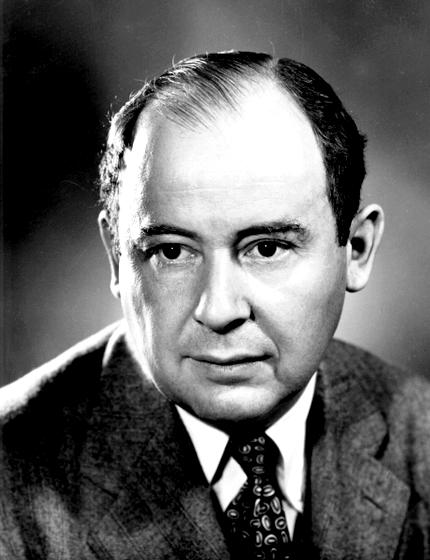Primary Sources: The Birth of the Nash Equilibrium
John Nash submitted his Ph.D. dissertation, “Non-Cooperative Games,” to Princeton’s mathematics faculty in May 1950, just a month shy of his 22nd birthday. The 27-page work in the field of game theory presented Nash’s equilibrium concept for non-cooperative games. The Nash equilibrium would become a dominant tool for economic analysis and prediction, and result in a Nobel Prize for Nash over four decades later.
Explore Nash’s ideas in these excerpts from his influential work.
This paper introduces the concept of a non-cooperative game and develops methods for the mathematical analysis of such games. The games considered are n-person games represented by means of pure strategies and pay-off functions defined for the combinations of pure strategies.
The distinction between cooperative and non-cooperative games is unrelated to the mathematical description by means of pure strategies and pay-off functions of a game. Rather, it depends on the possibility or impossibility of coalitions, communication, and side-payments.
The concepts of an equilibrium point, a solution, a strong solution, a sub-solution, and values are introduced by mathematical definitions. And in later sections the interpretation of these concepts in non-cooperative games is discussed.
The main mathematical result is the proof of the existence in any game of at least one equilibrium point. Other results concern the geometrical structure of the set of equilibrium points of a game with a solution, the geometry of sub-solutions, and the existence of a symmetrical equilibrium point in a symmetrical game.
As an illustration of the possibilities for application a treatment of a simple three-man poker model is included.
Von Neumann and Morgenstern have developed a very fruitful theory of two-person zero-sum games in their book Theory of Games and Economic Behavior. This book also contains a theory of n-person games of a type we would call cooperative. This theory is based on an analysis of the interrelationships of the various coalitions which can be formed by the players of the game.
Our theory, in contradistinction, is based on the absence of coalitions in that it is assumed that each participant acts independently, without collaboration or communication with any of the others.
The notion of an equilibrium point is the basic ingredient in our theory. This notion yields a generalization of the concept of the solution of a two-person zero-sum game. It turns out that the set of equilibrium points of a two-person zero-sum game is simply the set of all pairs of opposing “good strategies. “
Excerpt from Nash, John. Non-Cooperative Games. Ph.D. dissertation in Mathematics, Princeton University, 1950.





 Bisyo ng kabataan thesis proposal
Bisyo ng kabataan thesis proposal Hypothesis in a research proposal
Hypothesis in a research proposal Unl honors program thesis proposal
Unl honors program thesis proposal Richard auty resource curse thesis proposal
Richard auty resource curse thesis proposal Personal reflection essay thesis proposal
Personal reflection essay thesis proposal






